Birmingham’s Stratford Road area is a vibrant tapestry reflecting the city’s rich history of migration. Exploring this neighborhood reveals a mosaic of diverse communities, each leaving an indelible mark. From a Hindu temple’s architectural fusion to thriving Asian-owned businesses, the area showcases Birmingham’s evolving multicultural identity. Abandoned pubs stand as reminders of the community’s changing dynamics, underscoring the need to preserve the area’s heritage and support its ongoing transformation. What stories lie hidden in the nooks and crannies of this dynamic neighborhood?
Key Points
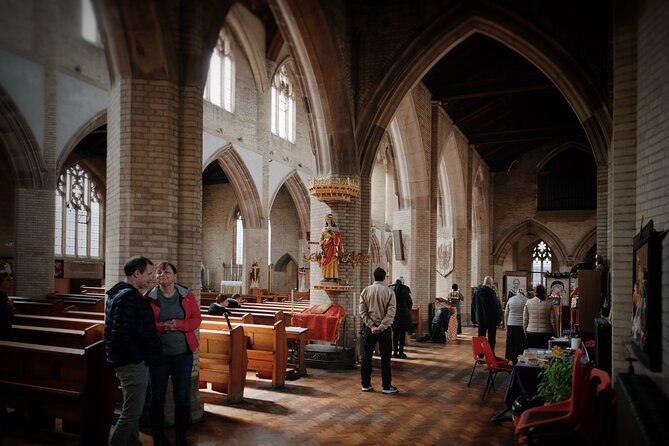
- Explore the multicultural fabric of Birmingham’s Stratford Road, which showcases diverse immigrant communities and their architectural, cultural, and culinary contributions.
- Discover the vibrant Yemeni culinary traditions and the enduring ties between Birmingham and the Middle East through a Yemeni restaurant.
- Witness the architectural transformation of a Hindu temple that reflects Birmingham’s evolving multicultural identity and accommodates diverse religious communities.
- Observe the diverse Asian business landscape on Stratford Road, which offers a glimpse into the entrepreneurial spirit and traditions of the local communities.
- Understand the changing community dynamics in the area through the presence of abandoned pubs that once served as hubs for various immigrant groups.
Multicultural Tapestry of Birmingham
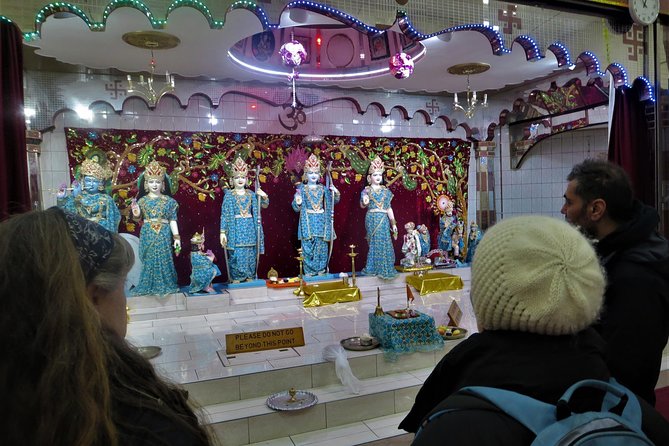
Birmingham’s multicultural fabric has been woven over generations, as the city’s Stratford Road area reflects the diverse waves of migration that have shaped its identity.
From Yemeni restaurants to Hindu temples converted from cinemas, the neighborhood showcases the rich tapestry of cultures that now call Birmingham home.
Travelers on this walking tour will explore the stories of Irish, Somali, and other immigrant communities, exploring places of worship, family-owned businesses, and even abandoned pubs that once served as hubs for these vibrant groups.
If you're enjoying exploring Birmingham on foot, you'll love these other walking tours we recommend
Yemeni Flavors and Heritage
One of the first stops on the tour is a Yemeni restaurant, where visitors can savor the rich flavors and cultural heritage of this vibrant immigrant community.
The restaurant offers a glimpse into the culinary traditions of Yemen, with dishes like fragrant spiced rice, hearty stews, and freshly baked flatbreads.
As the guide explains, the Yemeni community in Birmingham has a long history, dating back to the early 20th century when sailors from Yemen first arrived in the city’s port.
Today, the Yemeni influence can be seen in the diverse array of businesses and places of worship that dot the Stratford Road area, reflecting the enduring ties between Birmingham and the Middle East.
Hindu Temple’s Architectural Transformation
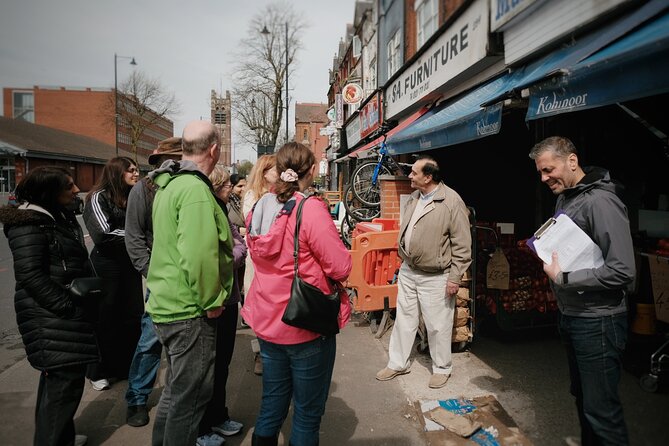
As the tour progresses, the group’s attention shifts to a Hindu temple nestled along the Stratford Road. Originally constructed as a cinema, this architectural gem has been transformed into a vibrant place of worship, reflecting the diverse religious landscape of Birmingham. The temple’s exterior showcases a blend of traditional Indian and contemporary British design elements, captivating the visitors.
| Architectural Transformation | ||
|---|---|---|
| Original Use: Cinema | Current Use: Hindu Temple | Year of Conversion: 1970s |
| Traditional Indian Features | Contemporary British Elements | Blend of Cultures |
| Intricately carved deities | Modern lighting and sound system | Vibrant hub of the community |
The tour guide eagerly shares the rich history of this remarkable place, highlighting how it serves as a testament to Birmingham’s evolving multicultural identity.
Diverse Asian Business Landscape
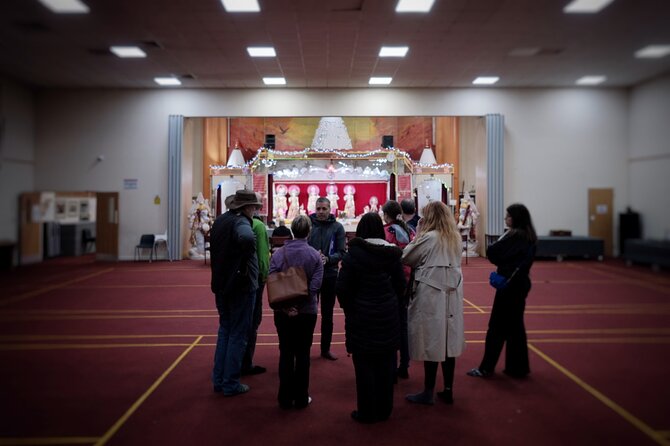
The Stratford Road’s business landscape showcases a vibrant mosaic of Asian-owned establishments, reflecting the area’s diverse cultural tapestry.
As visitors stroll along the bustling thoroughfare, they’ll encounter a kaleidoscope of Asian stores, each offering a glimpse into the rich heritage and traditions of their respective communities.
From specialized grocery stores carrying hard-to-find ingredients to bridal showrooms showcasing opulent wedding attire, these businesses cater to the unique needs and preferences of the local population.
The entrepreneurial spirit of the area’s Asian residents is palpable, as they bring their culinary, retail, and service-oriented ventures to the forefront of this thriving urban landscape.
Celebration of Matrimonial Grandeur
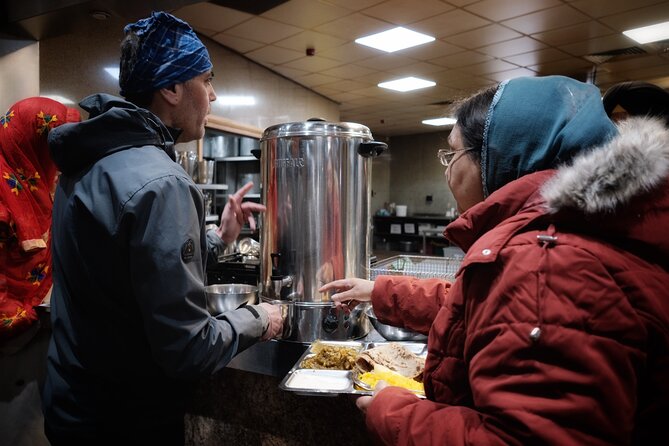
Amidst the vibrant commercial landscape of Stratford Road, a veritable wedding superstore stands as a testament to the area’s celebration of matrimonial grandeur.
This one-stop shop offers a dazzling array of bridal gowns, bridesmaid dresses, and accessories, catering to the diverse cultural traditions of the local community.
From opulent Asian-inspired designs to sleek contemporary styles, the store showcases the sartorial splendor that defines Birmingham’s multicultural weddings.
Bustling with activity, the wedding superstore reflects the city’s rich tapestry of traditions, where the exchange of vows is honored through a vibrant display of fashion, decor, and celebration.
For couples planning their special day, this hub of matrimonial magnificence serves as a unique gateway into the city’s diverse wedding culture.
As the walking tour progresses, the wedding superstore emerges as a symbolic representation of the Stratford Road’s role in cultivating a spirit of unity and shared joy.
- Shrewsbury Prison Guided Tour
- From Canals and Victorians to Todays City: Birmingham Walking Tour
- Discovering Birmingham 2 Hour Walking Tour to the Jewellery Quarter
- Shrewsbury Prison Self-Guided Tour
- Birmingham Slogging Gangs Walking Tour With Edward Shelby
- Birmingham City Centre Daily Walking Tour (10:30am & 5pm)
Abandoned Pubs and Community Change

Dotting the landscape of Stratford Road, abandoned pubs stand as poignant reminders of the evolving community dynamics that have shaped this vibrant borough. These once-thriving establishments have fallen victim to the shifting demographics and changing preferences of the area’s residents.
| Abandoned Pub | Former Purpose | Current State |
|---|---|---|
| The Grapes | Irish community hub | Dilapidated and boarded up |
| The Jug & Bottle | Working-class watering hole | Partially converted into a store |
| The Crown | Gathering place for Yemeni immigrants | Vacant and in disrepair |
| The Hare & Hounds | Community event venue | Shuttered and overgrown |
| The Hobbit | Student-centric social spot | Neglected and facing redevelopment |
These abandoned pubs stand as reminders of the ebb and flow of Birmingham’s multicultural tapestry, underscoring the need to preserve the area’s rich history and support its evolving community.
Experiencing Global Culinary Delights
Along the Stratford Road, travelers can savor the flavors of a global culinary tapestry, indulging in diverse cuisines that reflect the area’s rich cultural heritage.
- Sampling the authentic flavors of Yemeni cuisine at a local restaurant, where fragrant spices and hearty dishes transport visitors to the Arabian Peninsula.
- Exploring the vibrant world of Asian grocery stores, where shelves brim with exotic ingredients and traditional snacks, offering a glimpse into the diverse culinary traditions of the region.
- Discovering the aromatic wonders of a Hindu temple, once a cinema, where the aroma of incense and the sights of colorful deities create a sensory experience.
- Indulging in the vibrant energy of a wedding superstore, where the sights, sounds, and scents of global celebrations come together in a vibrant display of cultural diversity.
Accessibility and Transportation Options

The walkability and accessibility of the Stratford Road tour route make it suitable for visitors of varying mobility, with stroller access available throughout.
Public transportation options, including nearby bus and train stations, provide convenient access to the starting point and throughout the tour’s duration.
The Bordesley Centre car park serves as the meeting point, ensuring visitors can easily reach the starting location.
While the tour isn’t wheelchair accessible, the stroller-friendly nature of the route allows families with young children to participate.
Frequently Asked Questions
What Is the Maximum Group Size for This Walking Tour?
The maximum group size for this walking tour is 10-12 travelers. The tour is designed as a small-group experience, allowing for more personalized interactions with the local community guide and the diverse sights and experiences along the route.
Is the Walking Tour Led by a Local Community Guide?
Yes, the walking tour is led by a local community guide. The overview states that the tour is "Guided by a local community guide" and covers the waves of migration that have shaped the city of Birmingham.
How Long Does the Walking Tour Typically Last?
The walking tour typically lasts around 2 hours. It covers the key sites and experiences, allowing guests to explore the diverse global influences that have shaped the local community.
Where Does the Walking Tour End?
The walking tour ends at Sparkhill Park. According to the overview, the tour covers approximately 2 hours and concludes at this local park after exploring the diverse neighborhoods and businesses along the Stratford Road area.
Is the Walking Tour Wheelchair Accessible?
The walking tour is not wheelchair accessible, but it is stroller accessible. Participants should not have any heart problems or other serious medical conditions to take part in the tour.
Recap
The Stratford Road area in Birmingham is a vibrant, multicultural hub that reflects the city’s rich history of migration.
Visitors can explore the diverse communities, from Yemeni to Somali, and witness the fusion of traditional and contemporary elements in the neighborhood’s architecture and businesses.
While some reminders of the past, like abandoned pubs, remain, the area’s transformation highlights the importance of preserving its heritage while supporting its ongoing evolution.
More Walking Tours in Birmingham
- Jewellery Quarter of Birmingham: A Walking Adventure
- Birmingham: Victorian Canals to Todays City Walking Tour
- Inspiring Birmingham – Family Walking Tour
- Unique Corners of Birmingham – Walking Tour for Couples
- Birmingham : Private Custom Walking Tour With a Local Guide
- Birmingham Gangs Nighttime Historical Walking Tour With Pub Stops
More Tours in Birmingham
More Tour Reviews in Birmingham
Not for you? Here's more things to do in Birmingham we have recnetly reviewed
- Birmingham: Christmas Market and Festive Lights Walking Tour
- Cadbury World & LEGOLAND Discovery & Warwick Castle
- Birmingham: All in One Walking Tour
- Birmingham: Discovering Birmingham Guided Walking Tour
- Birmingham Historical Tour
- Birmingham: City Walking Tour and Exploration Game
- Birmingham: The National Motorcycle Museum Ticket
- Birmingham: Guided City Center Walking Tour (10:30am & 2pm)
- Birmingham Learn To Cook Thai
- Birmingham: Delicious Healthy Cooking Classes
- Best of Birmingham: Private Walking Tour with a Local
- Birmingham Slogging Gang Evening Walking Tour with Pub Stops
